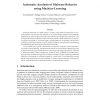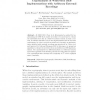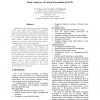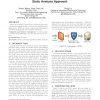112 search results - page 10 / 23 » Securely Obfuscating Re-encryption |
JCS
2011
12 years 11 months ago
2011
Malicious software—so called malware—poses a major threat to the security of computer systems. The amount and diversity of its variants render classic security defenses ineffe...
SACRYPT
2007
Springer
14 years 2 months ago
2007
Springer
Abstract. At DRM 2002, Chow et al. [4] presented a method for implementing the DES block cipher such that it becomes hard to extract the embedded secret key in a white-box attack c...
ACSAC
2004
IEEE
14 years 10 days ago
2004
IEEE
Software security assurance and malware (trojans, worms, and viruses, etc.) detection are important topics of information security. Software obfuscation, a general technique that ...
WWW
2008
ACM
14 years 9 months ago
2008
ACM
We propose STILL, a signature-free remote exploit binary code injection attack blocker to protect web servers and web applications. STILL is robust to almost all anti-signature, a...
CHES
2007
Springer
14 years 2 months ago
2007
Springer
Contrarily to Kerckhoffs’ principle, many applications of today’s cryptography still adopt the security by obscurity paradigm. Furthermore, in order to rely on its proven or e...




